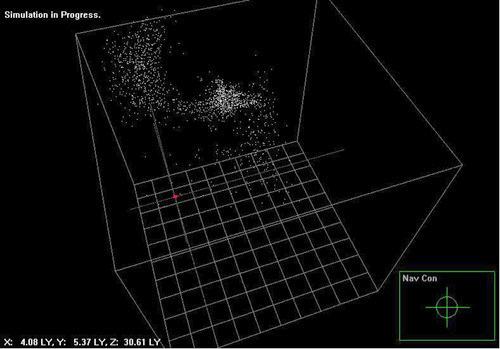

Over the course of development and testing, I have generated a number of interesting results with the project software. Here are just a few screen shots from different simulations I have run .
Typical Cluster

This image is typical of the stable state of many of the star clusters simulated by the program. Clearly visible is the gaussian like distribution of bodies, high in the center and decreasing away from it. Also visible is a distinctive barred structure along the long axis.
Planetary Disk

This result was obtained by placing a very high mass particle at the center of the volume and surrounding it with a rotating disk of significantly lighter particles. Initially, the particles in the disk fell into highly elliptical orbits giving the impression of an expanding and contracting ring system. After a short time, however, the ring system stabilized into the result seen above, The distinct boundaries in the rings are probably due to a phenomena known as "orbital resonance."
Cluster Collision

Two globular clusters brushed past one another in this instance, resulting in an S-shape form of particles strewn throughout space. The formation is slowly rotating about its central bulge.
Breakup

Here we see the star cluster in the lower left being torn apart by the gravitational tides caused by its two companions. The dense companion is clearly visible in the upper left, while the far more diffuse one is scattered about the central region. All clusters have approximately the same number of particles and mass distribution.